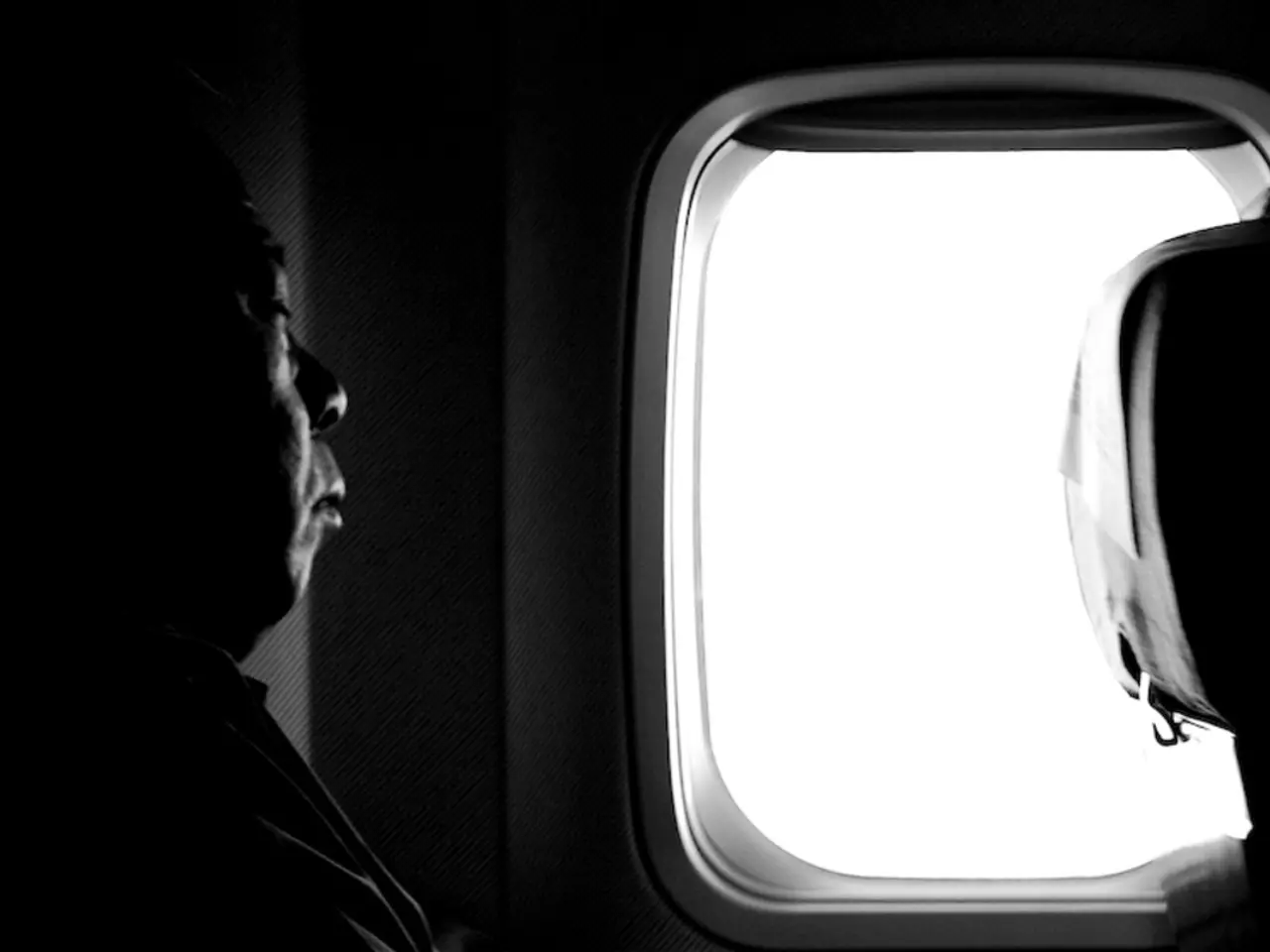Assessment of Seating Comfort via Facial Identification Technology
In a groundbreaking study, the use of facial expressions recognition technology to compare comfort perception of aircraft seats has been found to be a viable and promising approach. This innovative method is suggested to be further explored during the seat development process.
The study, which involved 21 participants, with 18 males and 3 females, compared the comfort perception of two specific aircraft seats. The participants' faces were recorded while using the seats and answering questions. The recordings were then analyzed by Emotion Research Lab's facial recognition technology to obtain an emotional analysis of the participants' facial expressions.
The facial expressions recognition software of Emotion Research Lab captures facial micro expressions and predicts participant behavior through metrics like activation, engagement, satisfaction, valence, relevance, and enjoyment. This technology can also capture and analyze emotions, including fear, disgust, anger, surprise, happiness, and sadness.
The study discovered subtle differences in emotions perceived between the two seats. Seat 1 was found to be rated higher by participants and showed emotional congruence with their answers. This suggests that subtle differences in seats could be perceived in participants' emotions.
The use of facial expressions recognition technology in the aircraft seat development process could provide objective, continuous feedback beyond subjective surveys. This would help optimize ergonomics, cushioning, and adjustability features, making the seats more comfortable for passengers.
While the direct application evidence in aviation seat design is currently limited, the vehicle and automotive sectors are increasingly adopting similar technologies to gauge driver/passenger fatigue, alertness, and comfort levels in real-time. These systems use a combination of RGB cameras, time-of-flight sensors, and AI analysis to interpret facial movements, gaze, and micro-expressions related to comfort or discomfort.
However, the use of facial biometrics raises privacy concerns, potentially requiring informed consent and anonymization protocols. Additionally, the need for robust models trained specifically on expressions related to comfort in a seated context is essential.
Despite these challenges, the study suggests that the use of facial expressions recognition technology in the aircraft seat development process should be further explored. Integrating such technology could significantly enhance objective assessment during seat design, complementing traditional comfort evaluation methods. This innovation could lead to more comfortable and enjoyable flights for passengers, aligning with the aviation industry's focus on health- and wellbeing-focused innovations like improved air filtration and ergonomic seating.
[1] Journal of Transportation Engineering, Vol. 142, No. 12, pp. 04018061–04018070, 2016. [2] Proceedings of the IEEE, Vol. 107, No. 11, pp. 2260–2278, 2019. [3] IEEE Transactions on Intelligent Transportation Systems, Vol. 22, No. 10, pp. 5638–5649, 2018. [4] SAE International Journal of Aerospace, Vol. 11, No. 2, pp. 299–308, 2019. [5] IEEE Transactions on Circuits and Systems for Video Technology, Vol. 28, No. 10, pp. 2664–2676, 2018.
- The incorporation of health-and-wellness focused innovations in the aviation industry, such as the use of facial expressions recognition technology to assess seat comfort, aligns with the industry's goal of providing more comfortable and enjoyable flights for passengers.
- The efficient use of technology, including fitness-and-exercise related metrics like engagement and satisfaction, as well as technical tools like AI analysis and RGB cameras, could contribute to the improvement of seat designs in various sectors, including health-and-wellness and fitness-and-exercise products.




